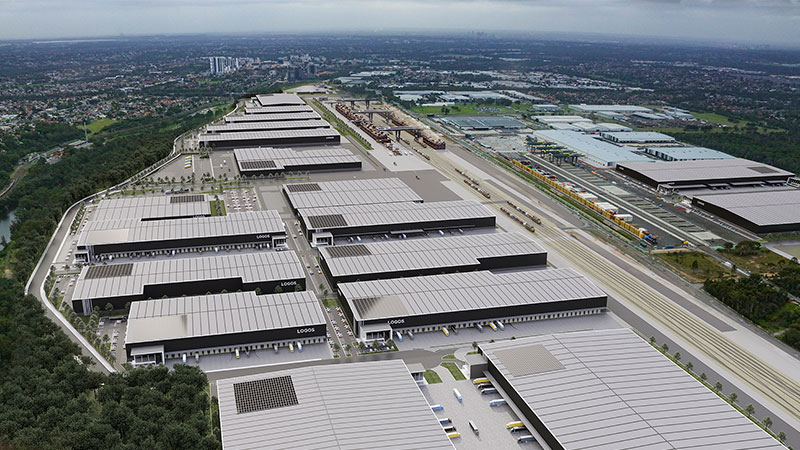Resources
Newsletter
Stay up to date and with the latest news, projects, deals and features.
SubscribeA consortium of investors have bankrolled property manager Logos Property Group’s $1.67-billion deal to acquire Qube’s Moorebank Logistics Park in south-west Sydney.
Australia’s AustralianSuper and TCorp, CDPQ’s Ivanhoe Cambridge and AXA IM will take stakes in the 243ha precinct—Australia’s largest intermodal logistics facility—alongside fund manager Logos.
Logos will act as Moorebank’s investment and development manager while listed infrastructure fund Qube Holdings will retain control of the hub’s rail terminals.
The deal, which includes land, comes more than six months after Logos won an auction for the site and entered exclusive talks with listed infrastructure fund Qube Holdings.
The consortium will pay $1.36 billion on financial close for the site’s warehousing and property components and about another $312 million on a deferred basis, subject to completion adjustments.
It is also subject to various approvals, including the consent of Moorebank Intermodal Company and the Foreign Investment Review Board.

Join us for a one-day virtual summit dedicated to the development of industrial property in Australia on July 29. Click here.
The acquisition increases Logos’ Australian and New Zealand assets under management to $11.5 billion and allows Qube to reduce the amount of money needed to fully develop the freight hub, instead allowing it to focus on its core logistics business.
Grant Samuel and Allens advised the consortium, while UBS ran the auction for Qube.
The Moorebank freight hub is a huge-scale project—equal in size to Sydney's CBD—and includes warehouse construction, leases, rail infrastructure and an import-export terminal.
It has the potential to hold about 850,000sq m of warehouse space and has a direct rail link to Port Botany.
AXA IM head of Australia Kumar Kalyanakumar said the collective vision for the precinct represented a fundamental shift in east coast logistics, as a fully automated port-to-site rail link.
“The acquisition of Moorebank Logistics Park (MLP) breaks new ground not just for Australian logistics, but the wider Asia Pacific region, both technologically and with regard to its ESG credentials,” Kalyanakumar said.
“MLP’s full automation and energy and water-saving technologies ensures that it sets an industry benchmark for sustainable, future-proof logistics facilities.

“We have gained access to a best-in-class asset, comprising a mix of core stabilised and development buildings, which will benefit from the government’s continued investment into road and rail infrastructure, providing a long-term opportunity for growing scale over time.”
So far, the state government has contributed more than $500 million of combined investment into the precinct and infrastructure with expectations it will deliver upwards of $11 billion in economic benefits over 30 years.
The precinct currently comprises more than 150,000sq m of warehousing, occupied by a diverse range of national and international businesses, while a number of pre-lets have already been secured for the new site, totalling 125,000sq m of space.
The consortium said the logistics precinct was the only site in Sydney’s southern corridor able to accommodate built-to-suit warehouses, giving tenants access to innovative, competitive and personalised options for their logistical needs.
Anchor tenants Woolworths and Caesarstone Australia have already committed substantial capital to technology and fit-outs.
“The site benefits extend far beyond just the tenants,” Logos head of Australia and New Zealand Darren Searle said.
“By 2030, [the precinct] is aiming to reduce Sydney and interstate truck travel by 243,000km per day, and lower carbon emissions by the equivalent of removing 11,000 vehicles from the road for a full year.”